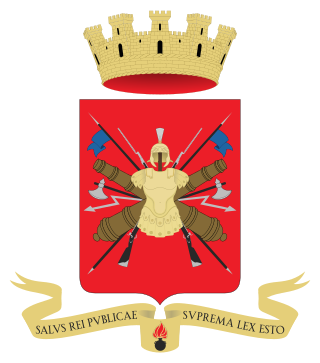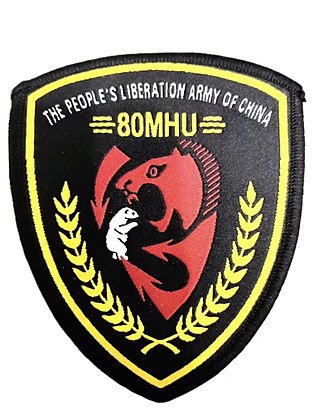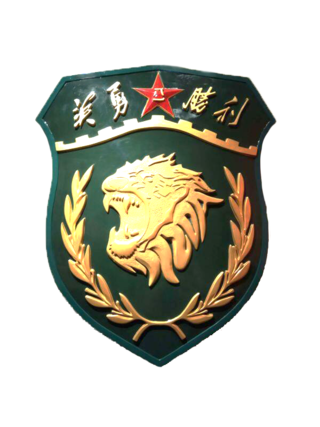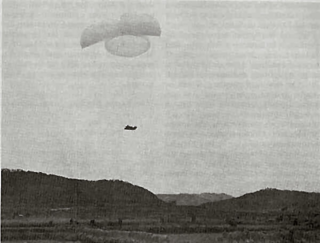
The Italian Army is the land-based component of the Italian Armed Forces. The army's history dates back to the Italian unification in the 1850s and 1860s. The army fought in colonial engagements in China, Libya, Northern Italy against the Austro-Hungarian Empire during World War I, Abyssinia before World War II and in World War II in Albania, Balkans, North Africa, the Soviet Union, and Italy itself. During the Cold War, the army prepared itself to defend against a Warsaw Pact invasion from the east. Since the end of the Cold War, the army has seen extensive peacekeeping service and combat in Afghanistan and Iraq. Its best-known combat vehicles are the Dardo infantry fighting vehicle, the Centauro tank destroyer and the Ariete tank and among its aircraft the Mangusta attack helicopter, recently deployed in UN missions. The headquarters of the Army General Staff are located in Rome opposite the Quirinal Palace, where the president of Italy resides. The army is an all-volunteer force of active-duty personnel.
The 2nd Infantry Division was a military formation of the Korean People's Army that fought during the Korean War. It is uncertain when the unit was originally raised, however, it is believed to have been formed sometime between 1946 and 1947. It was officially activated at Naman in February 1948 under Major General Kang Kon with a total strength of 14,000 soldiers.
The 235th Mechanized Infantry Brigade, formerly the 79th Division, is a military formation of the People's Liberation Army Ground Force. It's now a maneuvering brigade of the PLA 71st Group Army.

The 80th Medium Combined Arms Brigade, formerly the 80th Division, is a military formation of the People's Liberation Army Ground Force. It's now a maneuver part of the PLA 82nd Group Army.
The 81st Division was a military formation of the People's Liberation Army during and after the Chinese civil war and a part of People's Volunteer Army during the Korean War. They were a component of the 27th Army.

The 112th Mechanized Infantry Division is a military formation of the People's Liberation Army of the People's Republic of China. The 112th Division was created in November 1948 under the Regulation of the Redesignations of All Organizations and Units of the Army, issued by Central Military Commission on November 1, 1948, basing on the 1st Division, 1st Column of the Northeastern Field Army. Its history can be traced to 5th Corps of the Chinese Workers' and Peasants' Red Army taking part in the Pingjiang uprising in 1928.

The 113th Mechanized Infantry Division, now the 113th Medium Combined Arms Brigade, is a military formation of the People's Liberation Army of the People's Republic of China.
The 52nd Army Division, which consists of the 52nd Mountain Motorized Infantry Brigade and the 52nd Mountain Combined Arms Brigade, was originally the 149th Division. It is an infantry formation of the People's Liberation Army of the People's Republic of China, and is currently a mountain unit stationed near India.
The 76th Division was created in February 1949 under the Regulation of the Redesignations of All Organizations and Units of the Army, issued by Central Military Commission on November 1, 1948, basing on the 22nd Division, 8th Column of the Huadong Field Army. Its history can be traced to the 4th Division of Shandong Military District, formed in August 1945.

The Battle of Yongyu, also known as the Battle of the Apple Orchard or the Battle of Yongju to the Australians who fought in it, took place between 21 and 22 October 1950 during the United Nations Command (UNC) offensive into North Korea against the Korean People's Army (KPA) that had invaded South Korea during the Korean War. The battle was fought between the 3rd Battalion, Royal Australian Regiment of the 27th British Commonwealth Brigade and the KPA 239th Regiment.

The 58th Medium Combined Arms Brigade is a brigade of the People's Liberation Army Ground Force. It is one of the six combined arms brigades of the 83rd Group Army under the Central Theater Command. The 58th was previously a division, being converted to a brigade-sized formation in 1998.
The 199th Medium Combined Arms Brigade, formerly the 199th Motorized Infantry Brigade, is one of the six combined arms brigades of the 80th Group Army in the Northern Theater Command Ground Force.
The 4th Division was created in February 1949 under the Regulation of the Redesignations of All Organizations and Units of the Army, issued by Central Military Commission on November 1, 1948, basing on the 4th Independent Brigade, 2nd Column of the PLA Northwest Field Army. Its history can be traced to the 4th Independent Brigade of Lvliang Military District, formed in November 1945.
The 189th Division was created in January 1949 under the Regulation of the Redesignations of All Organizations and Units of the Army, issued by Central Military Commission on November 1, 1948,basing on the 9th Brigade, 3rd Column of the Jinchaji Military Region. Its history can be traced to the 5th Military Sub-district of Jinchaji Military Region, formed in March 1940.
The 11th Corps was a military formation of the Chinese People's Liberation Army. It was active from 1949 to 1952, with a six month break; and from 1969 to the end of 1985. It is currently inactive. In 1979 the corps took part in the Sino-Vietnamese War. In 1984 it again fought in Vietnam. It was stationed in the Kunming Military Region.
The 74th Division was created in February 1949 under the Regulation of the Redesignations of All Organizations and Units of the Army, issued by Central Military Commission on November 1, 1948, basing on 20th Division, 7th Column of PLA Huadong Field Army. Its history can be traced to 5th Contingent of New Fourth Army formed in May 1939, which took in several major battles during the Second Sino-Japanese War.
The 63rd Group Army, former 63rd Corps and 63rd Army Corps, was a military formation of China's People's Liberation Army existed from 1949 to 2003.
The 64th Group Army, former 64th Corps and 64th Army Corps, was a military formation of China's People's Liberation Army that existed from 1949 to 1998.
The 191st Division was created in February 1949 under the Regulation of the Redesignations of All Organizations and Units of the Army, issued by Central Military Commission on November 1, 1948, basing on the 11th Brigade, 4th Column of Huabei Military Region. Its history could be traced back to 3rd Military Sub-district of Jinchaji Military Region, formed in November 1937.





